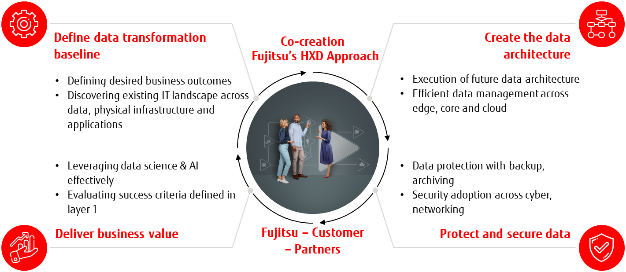
There’s no denying that the world is experiencing an unprecedented explosion of data. In the beginning of 2020, about 1.7 megabytes of new data was being created every second, for every one of the eight billion humans on the planet.
Now with the unique circumstances the world is in with the pandemic COVID-19,the data influx has increased exorbitantly and I would not be surprised if the number has been doubled or tripled, already.
The requirement of staying home to be safe has increased the data access over cloud – private, public networks overnight both for official and personal purposes.
Capturing more data is good and bad. Let’s see how?
The data explosion that’s sweeping the world is made up of structured and unstructured data, raw data, data-at-rest, data-in-transit and real-time data, all of which navigate your IT infrastructure systems at an overwhelming volume, variety, versality and velocity.
If you have the infrastructure and right mechanism in place to ensure integration across various data locations, formats and systems to capture and manage the right data sets – then having more data would mean more insights leading to being aware of customer requirements real-time to respond to and creating additional revenue streams.
However, if that is not the case – even implementing the latest continuum technologies like advanced analytics, data science or artificial intelligence (AI), would be futile and would cripple your existing business processes. We believe business understand this already and some has mandated and few have planned for digital transformation across their organization.
However, the need of the hour has become to act now to avoid a serious existential threat.
With this urgency in mind, how should organizations embark on this pressing data-driven transformation? How should businesses augment existing information landscapes and ensure effective utilization of AI or analytics to be competitive in the market?
The process from capturing data all the way to extracting business value out of it is a complex project. Fujitsu has broken this down to four critical steps to help customers become a data-driven enterprise. This has been covered in detail in our data-driven transformation strategy web page, briefly described as given below.

In this blog, we would be dwelling on ‘Extracting business value out of data’
Automating processes and streamlining the process of data collection and integration enables you to apply AI and machine learning techniques effectively. Of course, this requires right skill sets to implement and an optimal implementation can enable faster time to market and ensure your organization maintains a competitive advantage.
How are you extracting value out of data today?
Extracting value from data is not entirely new. IT professionals have mined data for business intelligence (BI) for more than two decades now. Originally, BI and data warehouses were used to analyze structured historical data, collected from operational databases in a fixed or rigid data model.
Extracting, transforming and loading data from the operational databases into data warehouse used to be conducted in batch operations, as reporting was not time sensitive.
In today’s fast-moving, complex world that is creating vast new digital footprints, organizations need to make sense of this, to gain real-time access to powerful insights and deliver them to the point of action.
As you embark on your data transformation journey, ask yourself what data transformation methods you are utilizing. If the answer is still BI reports, then you are relying on static and manual historical data to make dynamic business predictions.
These predictions risk not being accurate, mainly since traditional reporting methods which only analyze raw data, using on-premise reporting tools, are hardly able to take into consideration real time, in-transit and other increasingly popular forms of data.
Additionally, it has scaling, integration and maintenance challenges that will impede your data transformation journey as well as adding unnecessary costs. However, deploying a holistic and dynamic data transformation method will position your organization to capture all types of data in real-time and at scale.
How can you achieve optimal implementation of data science and AI?
- Unified data lakes
Depending on where you are on your data-driven transformation journey, different solutions should enable you to progressively capture data in a data pool that can be leveraged for advanced analytics.
Unified data lake tools enable the strategic collection and integration into a single pool for all enterprise data. Data lakes can process raw copies of the data source systems, real-time and in-transit data, in addition to transformed data used for tasks like advanced analytics reporting, analytics data visualization, and machine learning.
- Data hub
An alternative approach for companies who are transitioning to the latest technologies while not disrupting their existing business - is the data hub, which provides connectors to all data sources.
Instead of pumping data from versatile sources to a single destination, you leave your data where it is, causing no disruption to your business. However, data hubs are not superior to unified data lakes: Each option has its merits. Often a combination of a data warehouse, data lake and data hub can boost your augmentation and optimization performance.
- AI
AI in simple terms, without getting in to different types (like machine learning, deep learning, etc) essentially utilizes relevant data to amplify human capabilities by eliminating mundane and repetitive tasks, enabling accurate unbiased decision making and faster time to market. In the AI value chain, the IT requirements vary based on the workload across data collection, learning or training and inference process.
The success of AI deployments and their return on investment (RoI) depends largely on the amount of relevant data available for processing. In addition, AI requires significant infrastructure and skill set investments, as you need qualified data scientists for both data analytics and AI. Unless you have the required quality data sets, you will not realize the expected RoI.
Business leaders are now all too familiar with the way data-centric businesses, such as Airbnb and Uber, have used data to disrupt the traditional hotel and taxi industries. Perhaps more interestingly, the impact of data-shrewd start-ups, and of competitors moving across from other industry sectors, is having an impact on virtually all types of businesses.
The resulting effect of data-driven business decision making is that data is changing traditional market and sector boundaries, with large numbers of business leaders already experiencing the arrival of challengers from neighboring industry sectors. The future is set to be a platform-based, algorithmic and data-driven one, delivered via a compelling end-user experience.
The ability to catch people or things “in the act”, and affect the outcome real-time can be vital, valuable and disruptive. That’s what we, data management pioneers are aiming to help customers with: Stop the fraudulent credit card transactions in process, anticipate the failure of a machine or spare part before it gets damaged, reroute network or power grid traffic in real time to avoid traffic jams, guide the choices of shoppers through timely and contextual information, etc.
Data-driven examples like these, and more, can unlock significant business value.
Discover how Fujitsu's AI capabilities can help you unlock the value in your data on our website.









